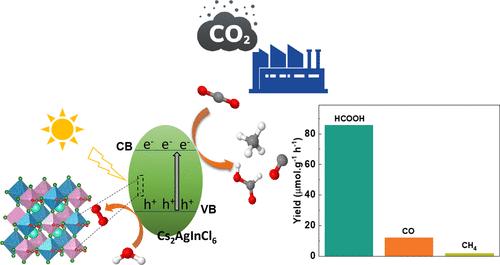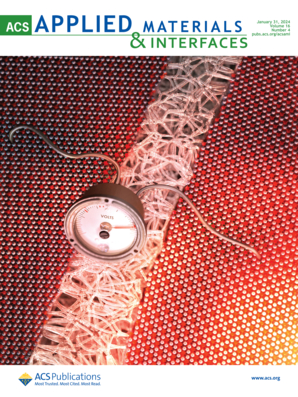Photochemical CO2 Reduction Using a Lead-Free Cs2AgMCl6 (M= Bi, In, and Sb) Double Perovskite toward Selective Formic Acid Production
IF 8.3
2区 材料科学
Q1 MATERIALS SCIENCE, MULTIDISCIPLINARY
引用次数: 0
Abstract
Perovskite materials have been identified as promising photocatalysts for CO2 reduction due to their unique physicochemical and optical characteristics. This study employs lead-free halide double perovskites based on Cs2AgMCl6 (M–Bi, In, and Sb or their mixed composition) as photocatalysts for carbon dioxide reduction. It was found that double perovskite materials are highly selective toward formic acid production, with more than 80% selectivity. The Cs2AgInCl6 material shows the best performance, with a formic acid conversion of 85.5 μmol g–1 h–1. These materials show excellent structural stability over 24 h under photocatalytic conditions. Furthermore, the selectivity of the product was investigated using density functional theory calculations, and the results show a low free-energy barrier toward the formation of formic acid as compared to other reduction products, including carbon monoxide and methane. The Ag site of the [110] terminated surface is identified to be a favorable site for catalytic reduction.

求助全文
约1分钟内获得全文
求助全文
来源期刊

ACS Applied Materials & Interfaces
工程技术-材料科学:综合
CiteScore
16.00
自引率
6.30%
发文量
4978
审稿时长
1.8 months
期刊介绍:
ACS Applied Materials & Interfaces is a leading interdisciplinary journal that brings together chemists, engineers, physicists, and biologists to explore the development and utilization of newly-discovered materials and interfacial processes for specific applications. Our journal has experienced remarkable growth since its establishment in 2009, both in terms of the number of articles published and the impact of the research showcased. We are proud to foster a truly global community, with the majority of published articles originating from outside the United States, reflecting the rapid growth of applied research worldwide.
 求助内容:
求助内容: 应助结果提醒方式:
应助结果提醒方式:


